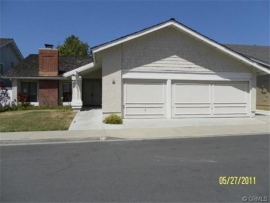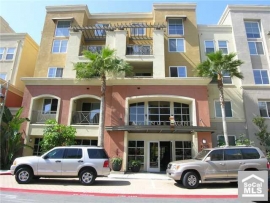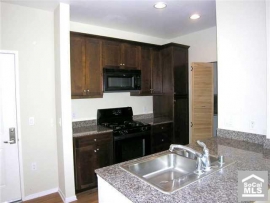Despite the downgrade of US government debt from AAA to AA+, US mortgage interest rates hit record lows. Is this the bottom of mortgage interest rates?


Irvine Home Address … 5 CROSSKEY Irvine, CA 92620
Resale Home Price …… $515,000

Our soul stew is the baddest in the land
But one dollar's worth was all that I could stand
But sometimes, sometimes bad is bad
Cool is a rule, but, sometimes, bad is bad.
The witches brew of toxic mortgages brought down the US economy, and now the copious amounts of debt the US government took on to help prop up the housing market and the economy is starting to have its own ill effects.
S&P Downgrades U.S. to AA+: So What?
Peter Cohan — Aug. 6 2011 – 9:21 am 
Late Friday evening, S&P downgraded the U.S.’s long-term debt rating to AA+ with a negative outlook. If that downgrade has no economic impact, it will fade from the headlines. And that is the most likely scenario.
I agree with this author. Investors are obviously not sharing S&Ps concern over the United States's ability to meet its debt obligations. Worldwide investors are looking at their alternatives and deciding that the United States is as stable as it gets.
The downgrade should come as no surprise. On July 25, The Daily Beast quoted me as saying that a downgrade was “inevitable.” And since I am not on Wall Street, I am confident that I was among the last to come to that conclusion.
After all, S&P was telegraphing that it would downgrade the U.S. for weeks when it said it would do so unless it saw a plan to cut the deficit by $4 trillion. Late last month it became quite clear that there would be no plan that big. So investors’ only uncertainty regarding S&P was whether it would follow through on its threat — and it did so, albeit a week later than anticipated.
How much of this was the people in charge at the S&P trying to influence US politics? Investors obviously don't think S&P has much credibility, and after their less than stellar ratings on mortgage CDOs, who could blame them?
Behind S&P’s downgrade is an economic model of the U.S.’s fiscal state over the next decade. That S&P model uses a Congressional Budget Office projection of $2.1 trillion in budget reductions over 10 years from the recently passed debt ceiling deal to forecast a rise in the U.S.’s net general government debt-to-GDP ratio.
The U.S.’s ratio is forecast to rise above those of governments that are retaining their AAA rating. Specifically, S&P forecasts that the U.S.’s debt-to-GDP ratio will increase steadily from 74% (2011) to 79% in 2015 and 85% by 2021.
Interestingly, AAA-rated governments — including Canada, France, Germany, and the U.K. — do better than the U.S. in some cases and worse in others. For example, Canada is the world’s healthiest AAA-rated government with debt-to-GDP of 34% in 2011 and 30% in 2015. But the U.K. is worse off than the U.S. in 2011 (80%) and France, with 83% is worse off in 2015.
The difference in S&P’s view between the U.S. and the U.K. and France is that it forecasts that our debt-to-GDP ratio will keep going up by 2021 whereas their ratios will start to go down by 2021.
The S&P is not considering the effect a resurgent US economy would have on its tax revenues. Further, it also doesn't reflect the likelihood of further budget battles to close the deficit when the economy does improve. Most economists agree that austerity during a time of financial recession generally makes the problem worse. It may be necessary, but it is economically harmful.
Wall Street operates on the gap between expectations and reality. And S&P’s decision should come as no surprise. The only question is whether any institutions will be required by their charters to sell U.S. treasury securities now that S&P no longer rates them AAA.
Some public pension funds and mutual funds may be required to sell U.S. treasuries. My guess is that will amount to sales of 3% of their combined U.S. treasury holdings — assuming that those funds did not sell them in anticipation of S&P’s move.
This is the main impact a downgrade might have. Many funds have limited discretion when dealing with their holdings. They must hold only highly rated securities, and if a security is downgraded, they must sell it.
For most investors, an S&P rating is not the critical factor in their investment decisions.
Meanwhile, assuming S&P’s move had been anticipated by the markets, one would expect to see higher interest rates in the U.S. and lower interest rates in the AAA-rated countries. That’s because prudent investors would be dumping U.S. securities and buying securities in AAA-rated Canada, France, Germany, and the U.K.
If the S&P carried weight with investors, this is exactly what would occur.
As it turns out, that is not quite what happened. Instead, rates tumbled in the U.S. and in all the other countries and the U.S. ended last week with the third-lowest 10 year bond yield of its peers — just slightly higher than those of the world’s healthiest AAA-rated country, Canada.
Here are the sizes in trillions of dollars of the five countries’ marketable treasury securities markets along with changes to their 10-year treasury yields between July 1 and August 5:
- U.S. ($9.3 T) from 3.15% to 2.56%
- Canada ($0.6 T) from 3.08% to 2.50%
- France ($1.9 T) from 3.38% to 3.01%
- Germany ($1.6 T) from 3.01% to 2.34%
- U.K. ($1.8 T) from 3.33% to 2.78%
Not surprisingly, big investors who set these rates are coming to a different conclusion than S&P. The U.S. treasury market is over four times bigger than Germany’s. And for investors like China — that own $1.1 trillion in U.S. treasuries – that superior size offers a comforting level of liquidity.
For all the joy that some take in S&P’s decision to downgrade the U.S., global investors passed their verdict on the U.S. before S&P’s late night press release — by lending the U.S. money for 10 years at a 19% lower rate than they did a month ago.
It remains to be seen whether all the weekend huffing and puffing will change that.
Further evidence of the flight to quality embracing the US is in its mortgage interest rates. Since nearly all US mortgage finance is directly backed by the full faith and credit of the US government, GSE asset-backed securities are a proxy for US Treasuries. Most would speculate that if the US starts having credit problems, mortgage interest rates would invariably move higher.
It isn't working out that way.
Mortgage Rates Hit Record Lows Amid Signs of Weakening Economy
Aug. 4, 2011 /PRNewswire/ — Freddie Mac
MCLEAN, Va., Aug. 4, 2011 /PRNewswire/ — Freddie Mac (OTC: FMCC) today released the results of its Primary Mortgage Market Survey® (PMMS®), showing mortgage rates dropping sharply amid falling bond yields and signs of a weaker than expected economy. The 30-year fixed averaged 4.39 percent, its lowest level for 2011. The 15-year fixed and 5-year ARM set new historical record lows averaging 3.54 percent and 3.18 percent, respectively.
News Facts
- 30-year fixed-rate mortgage (FRM) averaged 4.39 percent with an average 0.8 point for the week ending August 4, 2011, down from last week when it averaged 4.55 percent. Last year at this time, the 30-year FRM averaged 4.49 percent.
- 15-year FRM this week averaged 3.54 percent with an average 0.7 point, down from last week when it also averaged 3.66 percent. A year ago at this time, the 15-year FRM averaged 3.95 percent.
- 5-year Treasury-indexed hybrid adjustable-rate mortgage (ARM) averaged 3.18 percent this week, with an average 0.6 point, down from last week when it averaged 3.25 percent. A year ago, the 5-year ARM averaged 3.63 percent.
- 1-year Treasury-indexed ARM averaged 3.02 percent this week with an average 0.5 point, up from last week when it averaged 2.95 percent. At this time last year, the 1-year ARM averaged 3.55 percent.
Average commitment rates should be reported along with average fees and points to reflect the total cost of obtaining the mortgage. Visit the following links for Regional and National Mortgage Rate Details and Definitions.
The stock market is tanking right now because investors believe the semi-austerity in the budget agreement will hurt economic output. Bond prices are moving higher (and yields are moving lower) because money is fleeing the stock market and seeking the safety of government-backed mortgage securities.
The downgrade of the US government should be having the opposite effect on bond markets. Instead, investors are more afraid of a weakening economy than they are of the US defaulting on it obligations.
Quotes
Attributed to Frank Nothaft, vice president and chief economist, Freddie Mac.
- “Treasury bond yields fell markedly after signs the economy was weaker than what markets had previously thought allowing fixed mortgage rates to follow this week with the 15-year fixed and 5-year ARM setting new historical lows. The economy grew 1.3 percent in the second quarter, which was below the market consensus forecast, and first quarter growth was cut to less than a quarter of what was originally reported. In fact, the first half of this year was the worst six-month period since the economic recovery began in June 2009. Moreover, consumer spending fell 0.2 percent in June, representing the first decline since September 2009.
If the economy is hurting, the housing market will remain in the doldrums. The only thing that is going to save the housing market is more demand from people going back to work and qualifying for mortgages.
- “On a positive note, there were indications that the housing market is firming. Real residential fixed investments added growth to the economy in the second quarter after subtracting from growth over the first three months of the year. The CoreLogic® National House Price Index rose for the third straight month in June (not seasonally adjusted) and was the first three-month gain since June 2010. Finally, pending existing home sales rose for a second consecutive month in June and was up nearly 20 percent from June 2010 when the housing tax credits expired.”
If strength in the housing market is being touted as the good news, we are in serious economic trouble. The good news in the housing market is an illusion. Without continued strong job growth, the housing market is going nowhere.
What does this mean for today's home buyers?
Anyone who was going to buy, lower interest rates are great news. The abundance of bank inventory in many markets is making for a buyer's market. Sellers are competing with each other, and asking prices are generally falling. Lower interest rates in a buyer's market makes for better deals for buyers. Anyone considering a property with a cost of ownership lower than rent should take advantage of the low rates and take on fixed-rate debt while the rates are still this low. When rates go up, and they will eventually move higher, resale prices will likely come down further, but for those with a long ownership horizon, locking in a low cost of ownership is a nice benefit.
A note on FHA financing costs
Since FHA is facing mounting losses, the cost of FHA insurance has been going up and up. It currently stands at 1.15% of the purchase price. The cost of FHA insurance is so high that it pushes effective interest rates up over 6%. When interest rates get very low like they are now, conventional buyers obtain a huge cost advantage over FHA buyers.
For instance, today's featured property would have an FHA insurance cost of $572 per month. That cost comes directly out of the buyers ability to finance a payment. Magnified by 4.31% interest rates, and the additional $572 creates a significant reduction in buying power. Looked at another way, to finance today's featured property, an FHA borrower would need to make $144,286. A conventional buyer needs only a $105,868 income.
The bottom line is that many properties in Irvine now trade at or below rental parity, but only for conventional borrowers putting 20% down. Those borrowers have the lowest opportunity cost (they are pulling money out of CDs paying less than 2%) and they have the lowest borrowing costs because they avoid private mortgage insurance.
Irvine has traditionally been a move-up market with relatively little FHA financing. The cost differential will make that phenomenon continue unless prices come down significantly. The question is, “How many conventional buyers are still out there?” The low sales volumes attest to the lack of conventional buyers. If distressed inventories remain low — which is doubtful — then prices may hold where they are. However, with the low demand, prices may need to fall to where FHA buyers can afford to help clean up the mess.
No Red Tape Mortgage
The former owners of today's featured property paid $450,000 on 1/15/2003 using a $360,000 first mortgage and a $90,000 down payment. On 11/26/2003 they refinanced with a $460,000 first mortgage from New Century and withdrew their down payment plus $10,000 of spending money.
On 9/1/2006 the now defunct No Red Tape Mortgage company gave them a $637,500 first mortgage. I think No Red Tape Mortgage was well named. It epitomized the complete lack of mortgage qualification standards rampant during the housing bubble. No red tape means no documentation and no qualification standards. Just ask you you shall receive. 
The former owners received $277,500 in mortgage equity withdrawal before they quit paying.
Foreclosure Record
Recording Date: 04/06/2011
Document Type: Notice of Sale
Foreclosure Record
Recording Date: 10/04/2010
Document Type: Notice of Default
Domestic Cash Buyer
The property was sold to an all-cash buyer who lives in Irvine, probably as an investment. With limited opportunity for appreciation and an extremely poor cap rate, it isn't an investment I would chose.
——————————————————————————————————————————————-
This property is not available for sale via the MLS.
Please contact Shevy Akason, #01836707
949.769.1599
sales@idealhomebrokers.com


Irvine House Address … 5 CROSSKEY Irvine, CA 92620
Resale House Price …… $515,000
Beds: 4
Baths: 2
Sq. Ft.: 1918
$269/SF
Property Type: Residential, Single Family
Style: One Level, Ground Level, Ranch
Year Built: 1977
Community: Northwood
County: Orange
MLS#: K11068939
Source: CRMLS
Status: Closed
——————————————————————————
CASH OFFERS ONLY AT THIS TIME. A great fixer for you investors. Nice property in Northwood area. Needs work but ready for the right buyer that wants to make this place their own. 3 bedrooms, 2 bath, 2 car garage with direct access to home. High ceilings. Property has great potential. This is not a short sale.
——————————————————————————————————————————————-
Proprietary IHB commentary and analysis![]()
The previous owners who pulled over $250K out of the property obviously didn't put any back into it. Their seven years of ownership left it as a fixer.
Resale Home Price …… $515,000
House Purchase Price … $450,000
House Purchase Date …. 1/15/2003
Net Gain (Loss) ………. $34,100
Percent Change ………. 7.6%
Annual Appreciation … 1.5%
Cost of Home Ownership
————————————————-
$515,000 ………. Asking Price
$18,025 ………. 3.5% Down FHA Financing
4.31% …………… Mortgage Interest Rate
$496,975 ………. 30-Year Mortgage
$144,288 ………. Income Requirement
$2,462 ………. Monthly Mortgage Payment
$446 ………. Property Tax (@1.04%)
$0 ………. Special Taxes and Levies (Mello Roos)
$107 ………. Homeowners Insurance (@ 0.25%)
$572 ………. Private Mortgage Insurance
$140 ………. Homeowners Association Fees
============================================.jpg)
$3,727 ………. Monthly Cash Outlays
-$558 ………. Tax Savings (% of Interest and Property Tax)
-$677 ………. Equity Hidden in Payment (Amortization)
$28 ………. Lost Income to Down Payment (net of taxes)
$84 ………. Maintenance and Replacement Reserves
============================================
$2,605 ………. Monthly Cost of Ownership
Cash Acquisition Demands
——————————————————————————
$5,150 ………. Furnishing and Move In @1%
$5,150 ………. Closing Costs @1%
$4,970 ………… Interest Points @1% of Loan
$18,025 ………. Down Payment
============================================
$33,295 ………. Total Cash Costs
$39,900 ………… Emergency Cash Reserves
============================================
$73,195 ………. Total Savings Needed
——————————————————————————————————————————————————-






 She tried to emphasize her “investment” of sweat equity, but she went to the housing ATM to do the real heavy lifting.
She tried to emphasize her “investment” of sweat equity, but she went to the housing ATM to do the real heavy lifting.


 She declined to make her mortgage payment? She means to say that she strategically defaulted. Have you ever noticed that people come up with unusual evasions when confronted with their own guilt? Bill Clinton said, “I did not have sexual relations with that woman.” Sexual relations? This woman's evasion is just as odd. Why doesn't she just admit she told the bank to take their loan and shove it?
She declined to make her mortgage payment? She means to say that she strategically defaulted. Have you ever noticed that people come up with unusual evasions when confronted with their own guilt? Bill Clinton said, “I did not have sexual relations with that woman.” Sexual relations? This woman's evasion is just as odd. Why doesn't she just admit she told the bank to take their loan and shove it? If her rental is further from work and smaller than her old house, she must have drastically reduced her housing cost because the house she owned would have cost twice as much as a comparable rental. She is attempting to make is sound like she took a big step down in lifestyle, but I call bullshit on that notion.
If her rental is further from work and smaller than her old house, she must have drastically reduced her housing cost because the house she owned would have cost twice as much as a comparable rental. She is attempting to make is sound like she took a big step down in lifestyle, but I call bullshit on that notion.


































.jpg)








